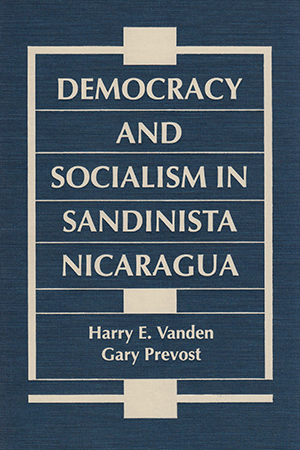
- 1993/184 pages
Democracy and Socialism in Sandinista Nicaragua
Paperback: $25.00
ISBN: 978-1-55587-682-1
Moving beyond Cold War rhetoric and stereotypical views of Third World Marxism, the authors convincingly argue that the democratic tradition and practice that was emerging in socialist Nicaragua could well serve as a model for other Third World states. They analyze concepts of democracy and the ideology of the FSLN and show that the Sandinista movement is not in any way stock Marxist-Leninism. Instead, this nationalist variant of Third World Marxism is—like most others—a function of indigenous realities.
Vanden and Prevost demonstrate that Nicaragua has seen the establishment of at least three different forms of democracy: popular, participatory democracy (manifested in mass organizations); Western-style representative democracy (as seen in the 1984 and 1990 elections and the resultant governmental structure); and Leninist vanguardism (shown in the functioning of the FSLN itself). After showing why participatory democracy did not triumph, they conclude with an assessment of the 1990 elections and their impact on the future of democracy in Nicaragua.







